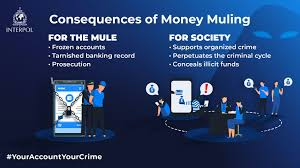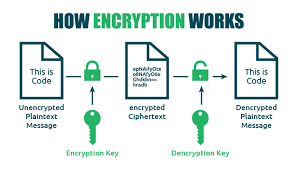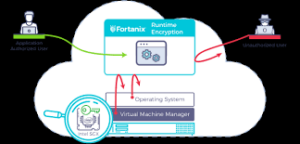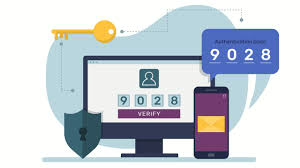A 22-year-old man in Singapore, Adam Ilhan Mohamad Idhamsahbani, has been sentenced to 20 months and 4 weeks in jail after stealing his grandmother’s entire savings of $280,000.
Key details:
- The victim was a 77-year-old woman suffering from Parkinson’s disease who relied on her grandson to access her online banking services
- The theft occurred for 2023 (January to December)
- When confronted, Adam lied to his grandmother, claiming she had been scammed.
- He even created forged letters supposedly from the police to support his deception.
- He maintained this lie in his initial police statement before confessing a day later.
- The stolen money was spent on personal expenses, including a laptop, desktop, printer, and in-game purchases for online games he was addicted to
- He has made restitution of $100,000 so far.
The judge rejected the defense’s request for probation, noting that the crime was “planned, deliberate, and not committed “in a moment of folly.” The prosecutor also pointed out that Adam showed a lack of remorse, attempting to blame his grandmother for entrusting him with access to her accounts.
For criminal breach of trust in Singapore, offenders can face up to 20 years in jail and a fine. Providing false information to a public servant can result in up to 2 years in jail, a fine, or both.
Analysis of Bank Account Hacking Scams and Anti-Scam Resources in Singapore
Bank Account Hacking Scams in Singapore
Common Types of Bank Account Scams
- Phishing attacks: Scammers send fake emails, SMS, or messages impersonating banks to trick victims into clicking malicious links that steal login credentials.
- Social engineering tactics: Scammers call victims pretending to be bank staff, police officers, or government officials to trick them into revealing banking details or transferring money.
- Malware and keyloggers: Malicious software installed on victims’ devices that records keystrokes to capture login credentials.
- SIM swap fraud: Criminals take control of a victim’s phone number to intercept one-time passwords (OTPs) sent by banks.
- Man-in-the-middle attacks: Intercepting communications between users and their banking platforms to steal information.
- Family/trusted person exploitation: As seen in the news article you shared, a family member with authorized access misused it to drain accounts.
Red Flags to Watch For
- Urgent requests claiming your account have been compromised
- Requests for OTPs, credit card CVV numbers, or full passwords
- Poor grammar or spelling in official-looking communications
- Pressure to act quickly without verifying
- Unsolicited calls asking for banking information
Anti-Scam Resources in Singapore
Government Resources
- ScamShield App: Developed by the Singapore government to block scam calls and messages.
- Anti-Scam Centre: Operated by the Singapore Police Force to tackle scam cases.
- National Crime Prevention Council’s Scam Alert Website: (scamalert.sg) Provides updates on the latest scams and prevention tips.
- ScamShield Hotline: Report scams via the hotline at 1800-722-6688.
Banking Security Measures
- Two-factor authentication (2FA): Required for all online banking transactions in Singapore.
- Transaction Limits: Banks allow customers to set daily transaction limits.
- Biometric Authentication: Many banking apps now use fingerprint or facial recognition.
- Transaction Notifications: Immediate alerts for account activities.
Steps to Take if Scammed
- Report to your bank immediately: Contact your bank’s fraud hotline to freeze accounts.
- File a police report: Visit a police station or file online through the Singapore Police Force website.
- Report to the Anti-Scam Centre: Call 1800-255-0000 or submit a report online.
- Monitor your credit report: Check for unauthorized accounts or applications.
- Change passwords: For all financial accounts and emails.
Prevention Best Practices
- Never share OTPs or banking credentials with anyone, including family members.
- Regularly monitor account activity for suspicious transactions.
- Use unique, strong passwords for banking accounts.
- Keep devices and software updated with the latest security patches.
- Verify requests by calling the official bank number (not numbers provided in suspicious messages).
- Enable alerts for all transactions on your account.
- Be wary of granting account access, even to family members, without proper oversight.
Singapore has a relatively robust anti-scam infrastructure, but public education and awareness remain crucial in preventing financial fraud, especially as scam tactics continue to evolve and become more sophisticated.
Applying Singapore’s Anti-Scam Resources to Bank Hacking Scenarios
Immediate Actions When Your Bank Account Has Been Compromised
Step 1: Contact Your Bank’s Emergency Hotline
- DBS/POSB: 1800-339-6963 (24/7 fraud hotline)
- OCBC: 1800-363-3333 (24/7 hotline)
- UOB: 1800-222-2121 (24/7 service)
- Standard Chartered: 1800-747-7000
- Citibank: 1800-225-5225
Request an immediate account freeze and report unauthorized transactions. Most Singapore banks guarantee compensation for unauthorized transactions if reported promptly.
Step 2: File a Police Report
- Report at the nearest Neighbourhood Police Centre/Post
- File online through the Singapore Police Force’s e-Service portal
- Provide transaction details, screenshots, and any communications with suspected scammers
Step 3: Report to Singapore’s Anti-Scam Centre
- Call the Anti-Scam Helpline: 1800-722-6688
- Provide reference number from police report
- The Anti-Scam Centre can work with banks to freeze suspicious accounts and attempt to recover funds.
Leveraging Singapore-Specific Anti-Scam Tools
ScamShield App
- Download this government-developed app to block scam calls and messages
- Report suspicious messages directly through the app
- Stay updated on the latest scam variants affecting Singapore residents
ScamAlert.sg Website
- Check if the suspicious activity matches known scam patterns in Singapore
- Use the “Share a Scam” feature to help others avoid similar scams
- Access Singapore-specific scam prevention resources
Bank Security Features
- Activate biometric authentication for your bank’s mobile app
- Set up real-time SMS/app notifications for all transactions
- Implement transaction limits appropriate to your needs
- Register for your bank’s fraud monitoring service (most Singapore banks offer this)
Recovery Process
Fund Recovery
- Singapore’s Anti-Scam Centre has partnerships with local banks that can sometimes facilitate fund recovery if reported within 24-48 hours.
- Request a formal investigation by the Monetary Authority of Singapore (MAS) if necessary.
- Check if your account has e-wallet protection insurance (offered by some Singapore banks)
Identity Protection
- Monitor Credit Bureau Singapore reports for unusual activity
- Place fraud alerts on your credit file through Credit Bureau Singapore
- Notify SingPass if you suspect your national digital identity has been compromised
Preventive Measures Going Forward
Singapore-Specific Security Practices
- Use the SGSecure app alongside your banking apps for heightened security alerts.
- Verify banking staff through the bank’s official verification processes (each Singapore bank has its own)
- Check official bank communications against scam examples on ScamAlert.sg
- Consider opening a separate account with limited funds for online transactions
- Set up a FAST (Fast And Secure Transfers) daily limit on your account
Education Resources
- Attend anti-scam awareness workshops organized by the National Crime Prevention Council.
- Participate in your bank’s security webinars (regularly offered by central Singapore banks)
- Review the Monetary Authority of Singapore’s guidelines on digital banking security.
By combining these Singapore-specific resources with general cybersecurity practices, you can significantly reduce the risk of bank hacking and improve your chances of fund recovery if an incident occurs.
Anti-Scam Protection Infrastructure in Singapore
Singapore has developed one of the most comprehensive anti-scam ecosystems in the region:
ScamShield System
- ScamShield App: A government-developed mobile application that:
- Filters and blocks potential scam calls and messages
- Allows users to verify suspicious contacts and websites
- Provides real-time scam alerts and updates
- ScamShield Helpline (1799): A dedicated hotline for scam verification and reporting.
- ScamShield Website: An Educational resource with updated information on current scam tactics.
Banking Security Measures
- Transaction Limits: Singapore banks implement customizable transaction limits for online banking.
- Multi-Factor Authentication: Required for significant banking transactions.
- Rapid Response Protocols: Banks have specialized teams to freeze accounts and attempt fund recovery when scams are reported quickly.
Coordinated Response Framework
- Anti-Scam Centre: Established by the Singapore Police Force to coordinate investigations and recovery efforts.
- Inter-Ministry Committee on Scams: Facilitates collaboration between government agencies.
- Project FRONTIER: A partnership between police, banks, and telecommunications companies to share intelligence and block scam operations.
Public Education Campaigns
The “ACT Against Scams” framework (Add, Check, Tell) represents Singapore’s public education approach, focusing on:
- Proactive security measures
- Verification through official channels
- Community information sharing
Effectiveness and Challenges
Despite these measures, the S$9.6 million in losses from this scam variant alone suggests significant challenges:
- Cross-Border Enforcement: Many scammers operate outside Singapore’s jurisdiction.
- Evolving Tactics: Scammers continuously adapt to circumvent security measures.
- Psychological Manipulation: Even well-educated individuals fall victim when under pressure or emotional manipulation.
The Singapore authorities are continuously refining their approach, with the ScamShield ecosystem representing one of the most innovative government responses to digital scams globally.
Anti-Scam Centre (ASC) Assistance in Singapore
How the Anti-Scam Centre Can Help
The Anti-Scam Centre (ASC) in Singapore offers several key services to scam victims and the broader public:
For Scam Victims
- Immediate Assistance:
- Report scams through the Police Hotline (1800-255-0000)
- Use the online I-Witness reporting portal (www.police.gov.sg/i-witness)
- In urgent cases requiring immediate intervention, dial 999
- Fund Recovery Assistance:
- ASC coordinates with banks to freeze suspicious accounts
- Works to recover transferred funds when possible
- The speed of reporting is critical—immediate reporting increases recovery chances
- Case Investigation:
- Documents scam incidents and collects evidence
- Tracks patterns to identify scam networks
- Builds cases for prosecution when perpetrators can be identified
For the General Public
- Scam Prevention Resources:
- Educational materials about current scam types
- Verification services for suspicious contacts
- Access to the ScamShield app and other protective tools
- Awareness Programs:
- Community outreach sessions
- Targeted education for vulnerable populations
- Regular updates on emerging scam tactics
How to Access ASC Services
- Reporting Channels:
- Police Hotline: 1800-255-0000
- Online: www.police.gov.sg/i-witness
- ScamShield Helpline: 1799 (for verification of suspicious contacts)
- What Information to Provide:
- Details of all communications with scammers
- Transaction records and receipts
- Screenshots of conversations and websites
- Phone numbers and account details used by scammers
- Follow-up Process:
- Cases are assigned a reference number
- Investigation officers may contact victims for additional information
- Recovery progress updates are provided when available
ASC’s Operational Approach
The ASC operates with a “time is of the essence” philosophy, focusing on:
- Speed: Rapid intervention to freeze accounts before funds are dissipated
- Coordination: Direct lines of communication with financial institutions
- Intelligence: Data analytics to identify scam patterns and networks
- Prevention: Using case insights to strengthen public awareness efforts
The ASC has recovered millions of dollars for scam victims since its establishment, though recovery becomes significantly more challenging after the first 24 hours following a scam.
Singapore’s Anti-Scam Centre (ASC) Measures
Based on the information available, here’s an analysis of the Anti-Scam Centre’s approach and measures:
Core Functions and Capabilities
- Rapid Response System
- The ASC is mentioned in the article as an entity that scammers impersonate
- Works with banks to trace and freeze accounts linked to scam proceeds
- Collaborates with telecommunication companies to terminate phone lines used in scams
- Coordination Role
- Partners with Commercial Affairs Department’s Anti-Scam Command (ASCom)
- Facilitates multi-agency operations like the recent islandwide blitz
- Serves as a centralized hub for scam prevention and intervention

Intervention Strategies
- Disrupting Financial Networks
- Freezing accounts to prevent scammers from accessing funds
- Seizing suspected proceeds (nearly $1M in the recent operation)
- Targeting money mules who provide banking infrastructure
- Technical Countermeasures
- Working with telecoms to terminate scam-linked phone lines (700+ in the recent operation)
- Likely monitors digital communications channels for scam patterns
- Public Education
- Issues reminders about legitimate government communications:
- Government officials never request money transfers
- Official entities don’t ask for banking, SingPass, or CPF information over the phone
- Issues reminders about legitimate government communications:

Results and Impact
The recent operation demonstrates the ASC’s effectiveness:
- Over 30 arrests
- 240+ bank accounts frozen
- Nearly $1M in proceeds seized
- 700+ phone lines terminated
Strategic Approach
The ASC appears to employ a three-pronged strategy:
- Preventive measures – Public education and awareness campaigns
- Detective measures – Identifying and tracking scam operations
- Reactive measures – Freezing accounts, making arrests, and recovering proceeds

Challenges
Despite these efforts, the high volume of cases (1,504 reported government impersonation scams in 2024) and significant losses ($151.3M) suggest ongoing challenges in:
- Keeping pace with evolving scam techniques
- Reaching vulnerable populations before they become victims
- Addressing cross-border aspects of scam operations
General Scam Prevention Tips
- Trust your instincts
- If an offer seems too good to be true, it probably is
- Keep personal and financial information confidential
- Stay informed about the latest scam techniques
- Report suspicious activities to authorities
- Educate family members, especially older relatives
- Use secure, updated technology
- Maintain a healthy level of skepticism online

How Encryption Works

Encryption uses mathematical algorithms to convert plaintext (readable data) into ciphertext (scrambled data). Only those with the decryption key can convert the ciphertext back into usable information. There are two main types:
- Symmetric Encryption: Uses the same key for encryption and decryption. It’s efficient but requires a secure key exchange.
- AsymmetEncryptiontion uses a pair of keys—a public key for encryption and a private key for decryption—to allow secure communication without prior key exchange.

Key Encryption Applications for Privacy
Device Encryption
- Full-disk encryption: Protects all data on your computer or smartphone (BitLocker for Windows, FileVault for Mac, builtEncryptiontion for iOS and Android)
- File-leEncryptiontion: Protects individual files and folders

Communication Encryption
- HTTPS: Secures website connections (look for the padlock icon in your browser)
- End-to-Encryption: Used in messaging apps like Signal, WhatsApp, and others to ensure only you and your recipient can read messages
- Email encryption: Options include PGP (Pretty Good Privacy), S/MIME, or encrypted email services

Network Encryption
- VPNs: Create an encrypted tunnel for all your internet traffic
- Wi-Fi encryption: WPA3 is the current most substantial standard for wireless networks
Cloud Storage Encryption
- At-rEncryptiontion: Protects stored data
- Zero-knowledge encryption: The provider has no access to your encryption keys
- Client-sEncryptiontion: Data is encrypted before leaving your device

Implementing Encryption in Your Digital Life
- Enable device encryption on all your computers and mobile devices
- Use encrypted messaging apps for sensitive communications
- Verify HTTPS connections when sharing personal or financial information
- Consider encrypted email for sensitive communications
- Choose cloud services with strong encryption policies
- Use a VPN when connecting to public Wi-Fi networks
- Password-protect and encrypt sensitive files and backups

Limitations to Consider
- Encryption can’t protect against malware already on your device
- Weak passwords can undermine even the strongEncryptiontion
- Encryption doesn’t hide metadata (who you’re communicating with, when, how often)
- Some countries have laws limiting encryption use or requiring backdoors

Encryption is a fundamental aspect of digital privacy that works best as part of a comprehensive security strategy. By understanding and implementing appropriate encryption methods, you can significantly enhance your online privacy protection.
.
Identity Theft
Identity theft is a pervasive form of fraud that can have devastating consequences for victims. In this crime, the perpetrator steals an individual’s personal information to assume their identity. This stolen information can often be gathered from discarded documents such as bank statements, utility bills, or even phishing scams.
Once armed with this data, the criminal may choose to open accounts in the victim’s name, a process known as application fraud. They might apply for credit cards, loans, or utility services under pretences, leaving the unsuspecting victim to deal with the aftermath.
The emotional toll of identity theft can be immense. Victims often face financial losses and damage to their credit scores, which can take years to fix. In today’s digital age, account takeovers have become a prevalent threat to unsuspecting victims. Criminals typically employ tactics such as phishing, vishing, or smishing to manipulate individuals into revealing their personal information.

Phishing often involves deceptive emails that appear to come from legitimate sources. These emails may prompt the victim to click on malicious links or provide sensitive details under the guise of verifying their identity.
Vishing, or voice phishing, involves phone calls in which scammers impersonate bank representatives or trusted entities to extract confidential information directly from the victim. Similarly, smishing involves text messages that lure individuals into divulging critical data.
Once armed with this personal information, the criminal can easily convince a bank to change the account holder’s address. This deception allows them full access to the victim’s financial accounts and resources.

Additionally, some criminals are skilled enough to bypass bank interaction altogether. They can use the obtained credentials to log into online accounts directly, executing unauthorized transactions without needing any further verification.
The consequences for victims can be devastating, leading not only to financial loss but also to emotional distress as they recover their stolen identities and secure their accounts. Consequently, individuals must remain vigilant and understand these risks to protect themselves against potential account takeovers for repair. Additionally, they may find themselves tangled in legal disputes as they try to prove their innocence.

Recovering from such a violation requires diligence and time, making it crucial for individuals to safeguard their personal information vigilantly. Implementing measures like shredding sensitive documents and monitoring credit reports can help prevent these types of crimes before they occur.t to Emerging challenges incorporate regular updates that promptly address any vulnerabilities that may surface. Users are strongly encouraged to activate automatic updates as part of their cybersecurity regimen, ensuring they can seamlessly take advantage of the latest fixes without any hassle.
In today’s rapidly changing digital environment, Maxthon’s unwavering commitment to ongoing security enhancement signifies not only its responsibility toward users but also its firm dedication to nurturing trust in online engagements. With each new update rolled out, users can navigate the web with peace of mind, assured that their information is continuously safeguarded against ever-emerging threats lurking in cyberspace.
Analysis of Scam Types and Prevention in Singapore

Based on the document, here’s an analysis of the scam types prevalent in Singapore and the prevention strategies being implemented:
Main Scam Types
- Self-Effecting Transfer Scams
- Most common type where victims willingly transfer money to scammers
- Psychological tactics target emotions like desire for companionship, respect for authority, and greed
- Victims often refuse to believe they’re being scammed

- Malware and Phishing Attacks
- Target bank accounts and online credentials
- Often involve sophisticated technical deception
- Phone/SIM-Based Scams
- Scammers using local phone numbers to make calls and send SMS
- Creates a false sense of legitimacy
- Cryptocurrency Scams
- Fake crypto trading interfaces that simulate profits
- Malware/phishing to drain crypto wallets
- Requesting victims convert money to cryptocurrency to evade banking safeguards
- Social Media and Messaging App Scams
- 60% of scams occur through these platforms
- Telegram specifically mentioned as a platform of concern (scam reports doubled in 2024)

Prevention Strategies
Government Regulatory Measures

- Protection from Scam Bills (January 2025)
- Empowering police to temporarily restrict banking transactions as a last resort
- Target cases where victims refuse to believe they’re being scammed
- SIM Card Regulations
- Limits on post-paid SIM card ownership
- Criminalization of SIM card misuse and transfer
- Penalties for SIM card abuse in scams
- Online Criminal Harms Act
- Requires online services to implement anti-scam measures
- Encourages robust user verification against government-issued IDs
- Potential for additional legislative action against platforms like Telegram
Banking/Financial Protection

- Enhanced Authentication
- FIDO-compliant hardware tokens being studied
- Requires physical proximity for transaction authentication
- Transaction Safeguards
- Cooling-off periods for high-risk transactions
- Enhanced fraud analytics
- Information sharing on money mule accounts
- Cryptocurrency Protection
- Working with MAS-licensed digital payment token providers
- Strengthening operational links with law enforcement

Public Education and Empowerment
- ScamShield Suite
- Launched September 2024
- Allows the public to check, report, and stay updated on scams
- ScamShield hotline (1799) for assistance
- Targeted Awareness Campaigns
- Monthly media campaigns
- Tailored to vulnerable population segments for specific scam types

Key Challenges and Trends
- Rising Financial Impact
- Total losses reached $1.1 billion in 2024 (a 70% increase from 2023)
- Evolving Tactics
- Scammers pivoting to local phone numbers
- Increased use of cryptocurrency to evade banking safeguards
- Exploitation of anonymity on messaging platforms
- Cross-Platform Nature
- Requires collaboration between government, tech companies, and financial institutions
- International dimension (implied by sophisticated criminal syndicates)

The Singapore approach appears multifaceted. It combines regulatory powers, technological solutions, industry collaboration, and public education to create a comprehensive anti-scam ecosystem. The emphasis on both preventive measures and empowering individuals to recognize scams suggests a balanced strategy to address this growing threat.
Maxthon

Maxthon has set out on an ambitious journey aimed at significantly bolstering the security of web applications, fueled by a resolute commitment to safeguarding users and their confidential data. At the heart of this initiative lies a collection of sophisticated encryption protocols, which act as a robust barrier for the information exchanged between individuals and various online services. Every interaction—be it the sharing of passwords or personal information—is protected within these encrypted channels, effectively preventing unauthorized access attempts from intruders.
Maxthon private browser for online privacyThis meticulous emphasis on encryption marks merely the initial phase of Maxthon’s extensive security framework. Acknowledging that cyber threats are constantly evolving, Maxthon adopts a forward-thinking approach to user protection. The browser is engineered to adapt to emerging challenges, incorporating regular updates that promptly address any vulnerabilities that may surface. Users are strongly encouraged to activate automatic updates as part of their cybersecurity regimen, ensuring they can seamlessly take advantage of the latest fixes without any hassle.
In today’s rapidly changing digital environment, Maxthon’s unwavering commitment to ongoing security enhancement signifies not only its responsibility toward users but also its firm dedication to nurturing trust in online engagements. With each new update rolled out, users can navigate the web with peace of mind, assured that their information is continuously safeguarded against ever-emerging threats lurking in cyberspace.
